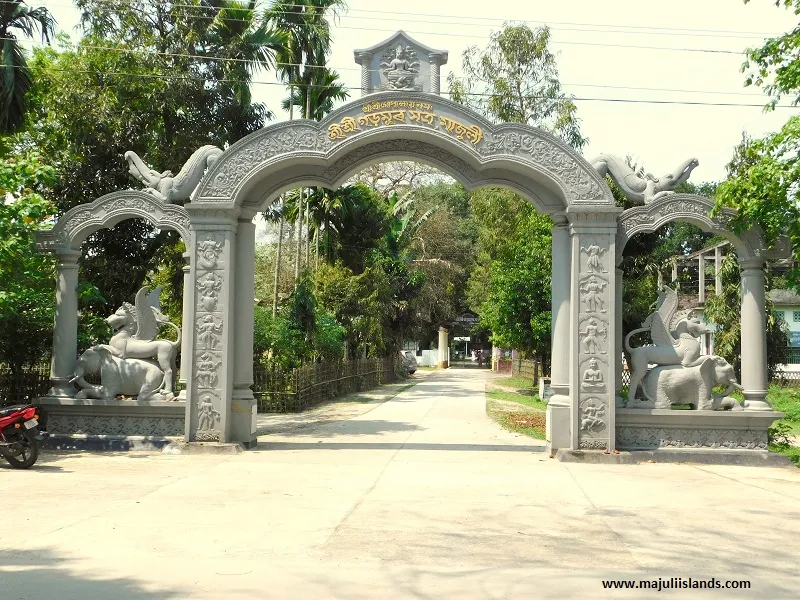Garamur Satra - A Royal Satra of Majuli Island with Rich History
Introduction: Unraveling the Legacy of Garamur Satra
Established in 1656 on Majuli Island, Garamur Satra stands as one of the four major royal Satras, steeped in history and cultural richness. Founded by the Ahom king Jayaddhvaj Singha and led by the revered Satradhikar Lakshminarayandev, this Satra has been a bastion of Vaishnavism in Assam for centuries.
The Origin and Meaning of Garamur Satra
Derived from the words "Garh" meaning embankment and "Mur" meaning head, Garamur signifies the end point of an embankment. Built on the northern end of Chowatalar Garh by King Pratap Singha, its establishment marked the beginning of a significant era in Assam's religious and cultural landscape.
Royal Patronage and Affluence
Garamur Satra flourished under the patronage of medieval Assamese kings, accumulating vast revenue-free lands and movable properties. King Siva Singha's generous donation of 30,000 puras of revenue-free land exemplifies the Satra's prosperity and royal favor.
Rajaghariya Satra: A Seat of Royal Dignity
Elevated by its royal connections, Garamur Satra earned the moniker "Rajaghariya Satra" as Satradhikars assumed attributes akin to royal palaces. Until the 20th century, they wielded power resembling that of kings, maintaining a regal demeanor within the Satra.
Transition to Semi-Monastic Life
In 1915, under the visionary leadership of Pitambardev Goswami, Garamur Satra transitioned from a monastic to a semi-monastic institution. The abolition of celibacy for inmates marked a significant shift, aligning with evolving societal norms while preserving the Satra's spiritual essence.
Thirteen Satradhikars: Guardians of Tradition
Over the centuries, thirteen Satradhikars have upheld the religious seat of Garamur Satra, each contributing to its legacy. Pitambardev Goswami's tenure stands out for his social reforms, advocacy against caste discrimination, and championing gender equality.
Cultural Extravaganza: The Ras Lila Festival
Garamur Satra's cultural vibrancy is epitomized by the Ras Lila Festival, held in the grand Garamur Vamshigopal Natya Mondir. Unlike other Satras, both men and women participate in this theatrical extravaganza, showcasing Assamese Satriya classical culture.
Preserving Heritage: Challenges and Triumphs
Despite facing challenges like internal commotions and invasions, Garamur Satra retains valuable possessions like the Rupar Sarai gifted by Atan Buragohain Dangariya and ancient literary manuscripts. Its heritage buildings and artifacts stand as testaments to its enduring legacy.
Conclusion: Embracing Tradition in a Modern World
Garamur Satra's journey from royal patronage to a modern-day cultural hub reflects the resilience of Assamese Vaishnavism. Through social reforms, cultural festivities, and preservation efforts, it continues to thrive, embodying the timeless spirit of tradition and adaptation.
People Also Ask:
- What is Garamur Satra famous for?
- What is the culture of Satra?
- What is the caste of Satra?
- Who is the head of Satra?
- What is the history of Satra?
- Who built Garmur Satra?
- Which place is known as the Land of Satras?
High CPC Keywords:
- Majuli Island Satras
- Assamese Vaishnavism
- Ahom Kings patronage
- Garamur Satra history
- Royal Satras of Assam
- Pitambardev Goswami legacy
- Ras Lila Festival Garamur
- Cultural heritage Majuli Island
- Assamese classical culture
- Garamur Satra architecture




Post a Comment
0Comments